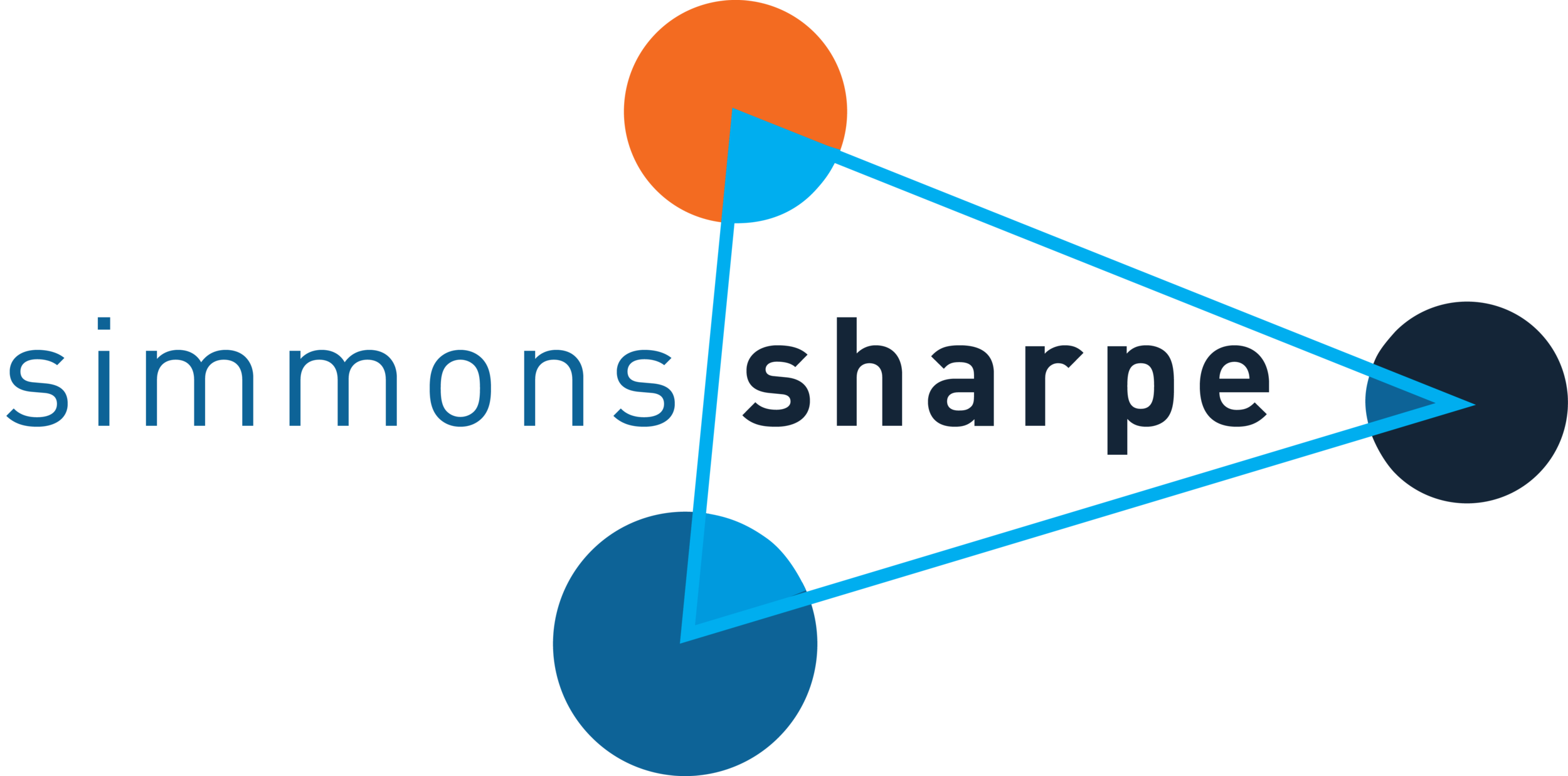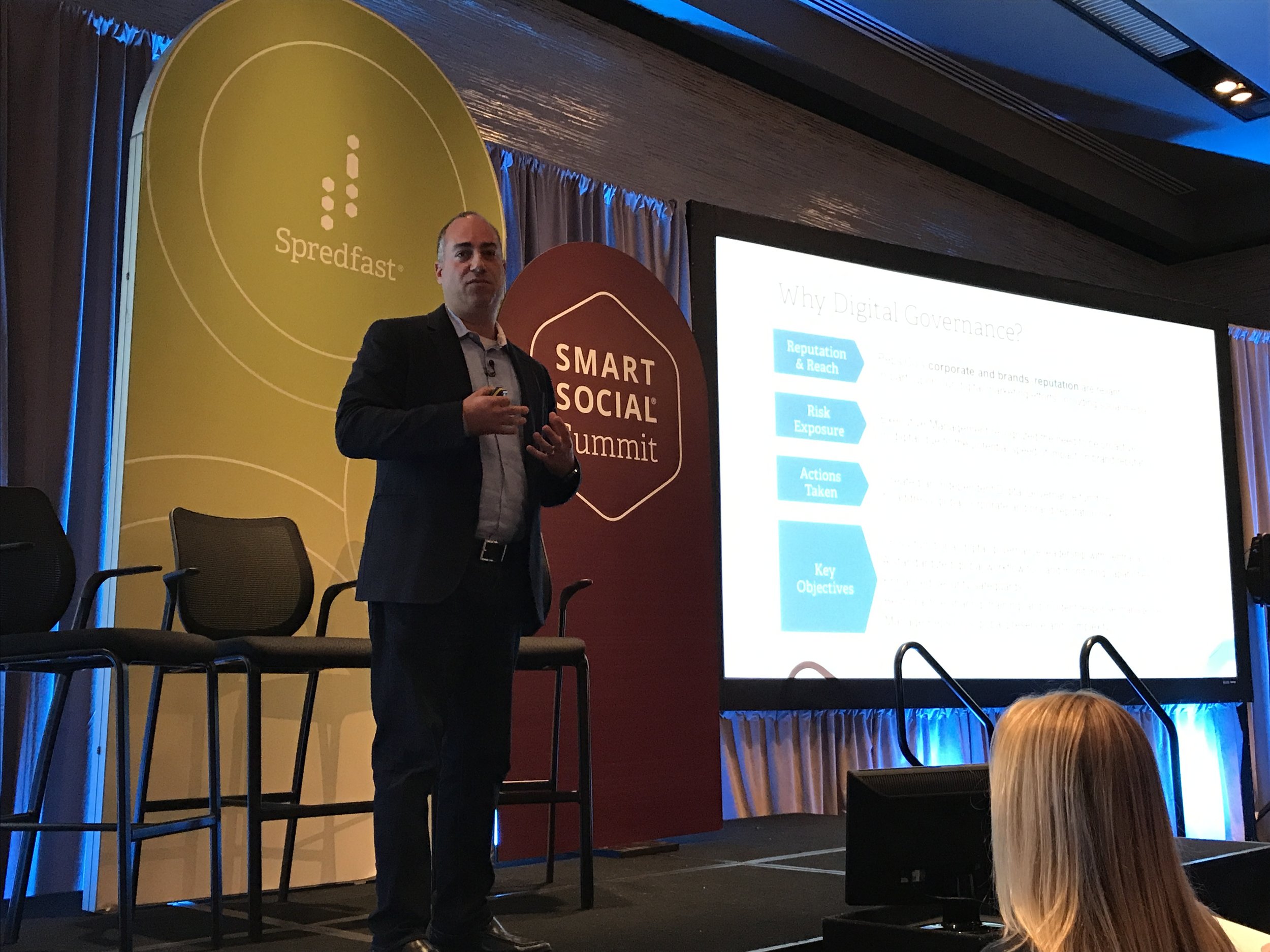How to Build your Brand Reputation on Social Media
It's hard to compete with Michelle Obama, but Spredfast sure gave it a whirl last week at their Smart Social Summit in Austin. They started with a tequila bar, then followed that with breakfast, brunch (for those who couldn't quite make the 8 a.m. call), lunch, fall-off-the-bone brisket, live music, craft beer.....
The conference? Right, right. Jam-packed with social media practitioners and highly relevant insights. Just before Michelle spoke, three leaders from Spredfast, PepsiCo and Goldman Sachs discussed "Taking Responsibility for Brand Protection and Reputation on Social."
Natanya Anderson, Vice President of Customer Enablement at Spredfast, led off by saying that brand reputation is not something to think about "in the moment," or in a crisis. Instead, brand reputation is an ongoing concern, something we should all be thinking about, and building, all the time. She added that there were three (of course) critical things to remember about brand reputation:
It is always on. It is a muscle that we build. "It's not just what people say when there's a crisis. Think about the good stories. Listen for the things that go right, and use that to build your brand reputation."
It is collaborative. Brand reputation is not just the job of PR. It should be integrated across campaigns, retail, customer care, marketing.
It must be intentional. "When you have hundreds or even thousands of people talking about your brand, they're all going to have a slightly different voice. So we have to think about very practical things like governance, and how content plays into brand reputation in an intentional way."
“Think about the good stories. Listen for the things that go right, and use that to build your brand reputation.”
Natanya stressed, "Brand reputation is something that a group of people build together. If you've ever been to a Disney Park, you know what I mean." She highlighted the Mom's Panel at Disney, a group of passionate fans brought in to help craft the brand reputation. These Moms passionately tell the Disney story themselves on their social media accounts. Why? Well, because they're nuts about Disney, but also because they are engaged - Mom's Panelists answer up to 20 questions per week from other parents, co-create content for Disney, and get a free Disney vacation for themselves and their family members in return. "It's not just Disney telling their story. It's their fans and the people who are most invested in them telling their story," Natanya commented. She challenged marketers to bring customers, partners, and detractors in to help build brand reputation.
Cory Notrica, Senior Director of Digital Governance, PepsiCo
Cory Notrica, Senior Director of Digital Governance at PepsiCo, was up next, and he started by saying, "Digital governance enables brand reputation. At PepsiCo, our digital governance process has been around about 2 years. A lot of it is based on our risk exposure...How do we detect things that might not be in line with brand reputation? Because that happens. We have 6 divisions, regions around the world, markets in each region, then in each market we have food, beverage, nutrition...lots of groups out there in the digital space."
He then talked about the organizational implications: "At PepsiCo, digital governance is within Communications - because it is relatively independent. But we are constantly working with other groups, like marketing, asking how do you assess your risk? What could go wrong? You have to assess it, mitigate it, deal with it. That's what the business process is about."
PepsiCo's framework for digital governance success.
Next, Kaydee Bridges, VP of Digital Strategy and Social Media at Goldman Sachs, hammered the message that content is critical to managing brand reputation, particularly when you have a product line that.....nobody really understands. Derivatives, anyone?
“In the land of snackable content, I’d say we’re more of the slow food movement. Some of our content is complex, so it will take a bit longer to consume, but it has high impact.”
Kaydee's strategy for making the complex understandable while remaining on brand was:
- Infographics. "A 200 page report can be summarized in an infographic then atomized over and over again into social media."
- Long form podcasts and video. And by "long form" video, she means 2-3 minutes. Podcasts are 20-40 minutes each. Goldman's in house content studio creates 100+ videos and 25+ podcasts each year.
- "On brand" content in a surprising platform - like the blockchain video Goldman Sachs did on Snapchat. That's not an obvious platform for Goldman Sachs, but two-thirds of the company's employees are millennials. "Surprising + on brand = earned media."
Kaydee also stressed the need for authenticity and being true to the brand in creating content. "It needs to be something that has high value. We're not outsourcing this. We create it in house. It's all informed by Goldman Sachs people and our data. If it were content that could be created by anyone else, we would really lose credibility. It has to be authentic."
During the question period, I asked the panelists how they managed the risk of employees posting inappropriate content on their personal social networks if they could be identified with the brand. Both said it was a fine line, but that activating employees on social was crucial for reach, credibility, and engagement. Cory mentioned the importance of "guardrails," and later told me that PepsiCo indicates to employees that the Code of Conduct applies to their activity on social networks. Both felt that pre-approved content for employees to post and comment on was useful for managing reputation risk and helping employees feel comfortable posting on social.
Following this bit of social media governance gold, we all hustled back to the Austin City Limits main stage, where Michelle Obama did not disappoint. Interviewed by Spredfast's Chief Customer Officer, Virginia Miracle, she was funny, unscripted, and insightful. She talked about the need for a "common set of facts" in America today, something that we at SSI believe has particular relevance for social. Content may be king today, but curation is the rising crown prince. In order to be credible on social, brands need to be authentic and accurate. And that requires good old fact-checking and data analysis. Michelle also talked about the need to ensure we listen and draw out insights from others, something that is relevant in social and in leadership in general:
“Be prepared to add a seat at the table, or even to give up your own seat, in order to have a full discussion.”
So what'd we learn? It's still the Wild West in social, and brands have less control over their messaging than ever before. But by engaging with their customers, partners and detractors, creating authentic, original content, and providing employees with some guardrails and governance, they can build credible brands people actually believe in. Worth the price of admission, two hours in. Is it too early for the tequila bar?





